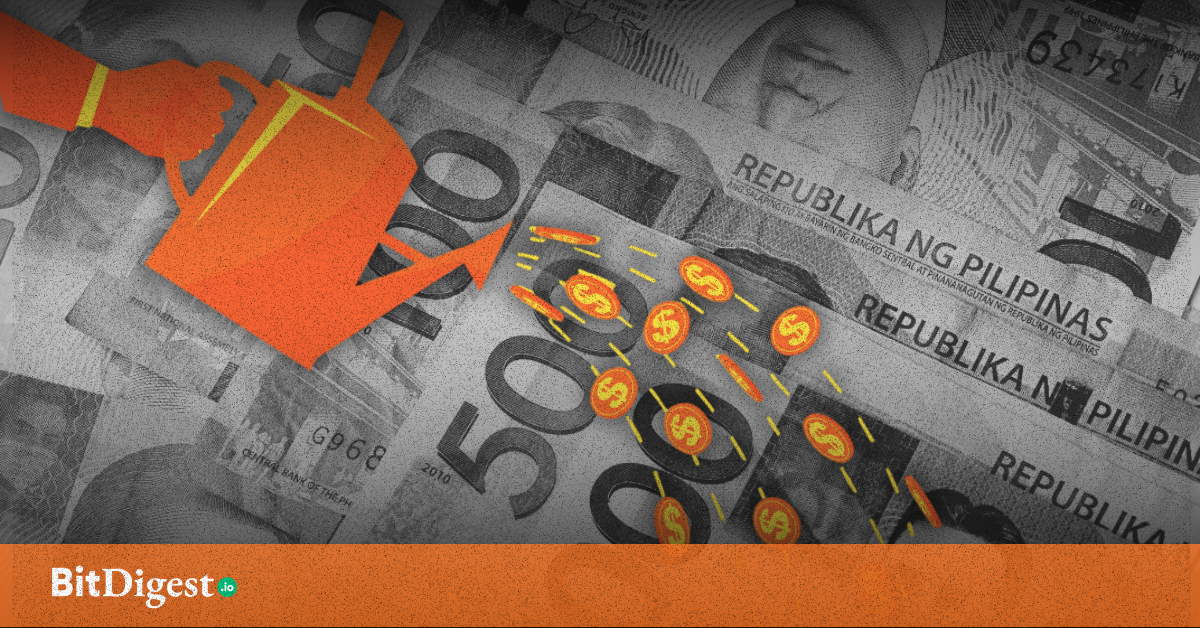The Real Deal Behind the Starbucks NFT Flop (And How Coffee Chains Could Do Better)
Earlier this month, Jollibee Foods Corp. announced it would be buying a 70% stake in one of South Korea’s top coffee chains, Compose Coffee. With over 2,600 shops throughout Korea, this brand is set to be Jollibee’s biggest brand acquisition by store count. According to the company, this investment is part of Jollibee’s strategy to capture the fast-growing South Korean coffee market, which ranks third worldwide in terms of coffee consumption per capita.
For many non-Koreans, Compose Coffee is better known for its brand ambassador, none other than KPOP superstar and fan-voted “most handsome man in the world,” Kim Taehyung (V) of BTS.

Everyone has their own go-to café, but here in the Philippines, the most famous coffee chain is undoubtedly Starbucks, with over 400 licensed coffee shops operating nationwide. In fact, according to Statista, we rank as one of the countries with the most Starbucks cafes in the world.
In Web3 circles, there’s one more thing Starbucks is known for: its foray into NFTs.
Remember the Starbucks NFTs?
Back in December 2022, Starbucks partnered with Polygon to launch a beta NFT program, Starbucks Odyssey, as an extension of Starbucks Rewards but with the added benefit of the rising popularity of Web3. The mechanics were pretty straightforward: Starbucks lovers would participate in a series of immersive activities called “journeys” ranging from virtual coffee farm tours to interactive games to receive collectible “stamps” (i.e., NFTs) and accumulate points. Points could then be exchanged for exclusive rewards, from access to merchandise to invitations to Starbucks events. As an added benefit, members would be able to share their experiences and NFTs in the Odyssey community.

At that time, NFTs were massively hyped even outside Web3 circles, and when the public was offered the chance to buy them for $100 each, 2,000 units sold just twenty minutes after launch. Initially, many had high hopes for Starbucks Odyssey, and it even reached around 58,000 active participants. However, just 18 months later, in March 2024, the coffee giant announced it would be scrapping the program.
So, what went wrong? Did Starbucks fail to maximize the potential of NFTs? Or is Web3 technology simply not compatible with Web2 companies?
You could argue that NFTs were simply overhyped at the time the program was launched. It wasn’t long before Web3 users moved on to other blockchain use cases such as tokenized Real-World Assets (RWAs) and Decentralized Physical Infrastructure Networks (DePINs). But critics have also pointed out the following three main reasons it failed to achieve long-term success:
- The project didn’t actually bring any unique value that wasn’t achievable with Starbucks’ existing rewards program. Starbucks Odyssey could have been made possible even without tapping into blockchain technology. NFTs were a fun add-on but they failed to offer tangible merits to justify their continued use.

- The overall user experience failed to meet expectations, partly because of a lack of integrations with other platforms and programs. In other words, the technology was still too new—it still is, even now—to fully maximize what it can do.
- The majority who bought or worked to earn the NFTs did so purely for speculative value instead of long-term utility. Many early adopters simply resold them in the secondary market, with some NFTs selling for nearly $2,000 each.
Using NFTs as receipts or proof of ownership for unique and high-value items like luxury sneakers, antiques, or concert tickets makes sense, but what practical uses do they serve for consumables like a roll of tissue, a pack of fresh veggies, or a cup of coffee?
Maximizing Blockchain’s Full Potential
A more impactful use of blockchain technology would be to incorporate it into the supply chain itself to increase transparency and traceability at every stage of production and processing from farm to table. Beyond using crypto and NFTs for investment potential, blockchain technology could enhance the actual product’s quality, distribution, and sustainability. Someone buying a cup of coffee would be able to trace the origin of the ingredients that make it to their drink. This would be especially helpful for conscientious customers supporting organic and locally-harvested coffee farmers who want to assure themselves that the coffee was indeed produced through sustainable and ethical practices.
Globally, coffee production is scattered across many different locations and is plagued by many challenges and inefficiencies including limited farm-to-market access, price volatility, uneven profit distribution, and limited opportunities for small scale coffee growers. Companies have the option to implement voluntary sustainability standards, but while the burden and cost of meeting those standards falls primarily on the ones producing the coffee, the ones who profit the most are the retailers directly marketing the products as organic and sustainable.
Blockchain would encourage stakeholders to be more accountable and transparent.
Data including farm origin, batch number, factory and processing data, expiration date, storage temperature, and shipping details could be embedded into the product’s blockchain identity. The data would be entered by the coffee producers and distributors, quality assurance checks and third-party verification would be timestamped, and all the information would be accessible to consumers who want to track the product from farm to cup. Traceable records would incentivize them to adhere to the highest quality standards and produce only chemical-free, disease-free, uncontaminated, sustainable, and ethically-produced products.
Let’s go deeper into the potential impact blockchain can have in each stage:
1. Harvesting
Data such as harvest time, fertilizers and pesticides used, location, quantity, and growing conditions are recorded on the blockchain when harvested. Information about the handling and immediate post-harvest treatment can also be recorded, since these have a huge effect on the product’s quality and price.
2. Processing
After harvesting, the coffee undergoes processing which includes pulping, fermentation, and drying. Once dried, the coffee is hulled, sorted, and graded at a milling station. Details such as the output of different grades of coffee and data about the milling and roasting process can be linked to each batch to ensure consistency and quality.
3. Regulatory Compliance
Customs officials and regulators can easily access secure, immutable records of export-related documents, including production codes, manufacturer accreditations, issuance dates, coffee bean grades, and quality certifications in real time.
4. Shipping and Logistics
The transportation of coffee from the country of origin to its destination is logged on the blockchain, including updates on location and condition (like temperature and humidity levels if being monitored).
5. Retail Distribution and Sales
Packaging can include QR codes linked to the blockchain records, allowing consumers to view the coffee’s journey and processing details via a smartphone app. By scanning a QR code, consumers can access a detailed history of the coffee’s production and journey, enhancing trust and potentially justifying a premium price. Smart contracts can also be set up to automatically release payments to workers and suppliers once the blockchain verifies that the coffee has been processed according to specified standards.
Is it just coffee, though?
Around the world, researchers are figuring out how to integrate blockchain with other food items to ensure food safety and quality. Take soybeans, for instance. Used in a variety of products including tofu, soy sauce, soy milk, and animal feed, soybeans are one of the most important cash crops globally. However, clearing land for soybean production has led to record-high deforestation in countries like Brazil.
One study proposes using a combination of IOT devices such as satellite cameras and sensors to capture data, smart contracts to automate transactions, and the Interplanetary File System (IPFS) for documenting photo and data evidence of the transactions. This would make it easier to detect which soybean farmers are responsible for deforestation and which are truly committed to sustainable operations.
In such a model, if certain individuals were to enter incorrect data or make dubious transactions, it would be easy to trace them back to the source. Not only would this be better for auditing purposes, it would also increase transparency by making the data accessible to any coffee shop looking for suppliers or any consumer deciding which café to order from.
Still, for blockchain technology to have actual impact beyond paper, the broader picture needs to be considered. For any of this to be feasible, there needs to be sufficient tech infrastructure to allow all stakeholders, from coffee farmers to end consumers, to easily access the dApps connected to the blockchain. They will also need enough training and financial resources to be able to deploy these tools effectively. And of course, blockchain technology cannot prevent individuals from entering incorrect or falsified data, such as passing off chemical-laden products as pesticide-free.
There also remains a huge power imbalance between small-scale coffee growers and manufacturing and retail conglomerates. Without careful planning, attempting to incorporate the technology may burden subsistence farmers with extra workload and expenses while selectively benefiting corporations with the financial resources and manpower to effectively leverage the system.
Overall, implementing blockchain in the coffee supply chain not only provides traceability and transparency but also streamlines operations, enhances quality control, and builds trust with consumers. However, its effectiveness ultimately depends on how much cooperation and commitment to honest reporting companies across the entire supply chain are willing to offer.
.svg)


.svg) SHARE TO FACEBOOK
SHARE TO FACEBOOK SHARE TO TWITTER/X
SHARE TO TWITTER/X SHARE TO LINKEDIN
SHARE TO LINKEDIN SEND TO MAIL
SEND TO MAIL





.svg)


.svg)